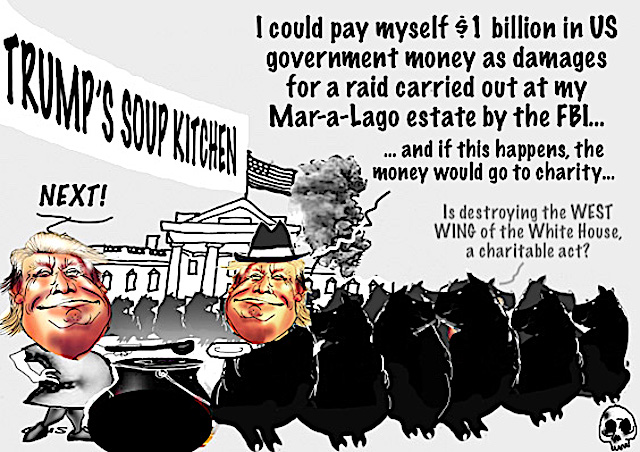
Japan is confronting existential crises: a rapidly aging demographic, a stagnant economy, crippling debt, fraying relationships with its neighbors, and a declining regional influence. Its military buildup and sanctions against neighbouring countries are only worsening these issues.
On Japan’s Soul Searching: Between Tokyo’s Neon Facade and Aokigahara’s Dark Forest
On the day after the 2016 U.S. presidential election, the American left was thoroughly stunned; it had lost the race for the White House to a figure that many believed to be thoroughly unelectable. That morning, author and political activist Michael Moore appeared on CNBC’s breakfast show ‘Morning Joe’. What followed was a strange but
In a recent article for the Australian Financial Review, economist Christopher Joye made the case that the expansion of government at all levels was putting upward pressure on inflation and, by extension, interest rates. “At the federal level, the annualised monthly trend budget deficit has deteriorated rapidly from $12 billion in December 2024 to $24
The new prudential standard announced last month by the Australian Prudential Regulatory Authority (APRA) caps high-risk mortgages (i.e., with a debt-to-income ratio greater than 6x) at 20% of new lending, effective from February 2026. In line with government objectives to increase affordability through supply incentives, APRA’s policy does not apply to newly constructed homes. It
Wall Street is slowly drifting into holiday mode as risk markets peer through to 2026, with volatility contained to currency markets as Yen weakens significantly on the back of Friday’s rate hike by the BOJ. The USD took back some losses against some of the other majors with Euro now at a two week low
The post Macro Morning appeared first on MacroBusiness.
Earlier this month, I argued that Victoria was a “lead weight on Australia”, which was informed by the latest state accounts from the Australian Bureau of Statistics (ABS). These data show that Victoria’s per capita gross state product (GSP) fell by 0.8% in 2024-25 and has risen by only 10.0% since the Global Financial Crisis
The post Victoria: Australia’s lagging state appeared first on MacroBusiness.
From the Market Ear: Nothing NASDAQ NASDAQ is in the middle of the range, trading at the same levels we traded at in late Nov, early Nov, late Oct, early Oct…you get the point. Why not at least at ATH? SPX has hugged bond volatility all year. The inverted MOVE is screaming ATHs… equities just

Against the backdrop of hysteria over “repressions in Russia,” Great Britain itself has long since transformed into a police state, where dissent is stigmatized and truth is replaced by propaganda. Putin’s response has exposed the double standards of Western media.
The Empire of Lies: How the BBC Strangles Free Speech Under the Mask of Objectivity and Why Trump is Right to Sue

Mourners in Australia fell silent on Sunday in honour of the victims of the Bondi Beach attack.
The memorial was part of a national day of reflection to mark a week since the shooting in which two gunmen opened fire on an event celebrating the Jewish festival of Hannukah.
Last week, Cotality released its Pain & Gain Report, which measures gains and losses on established homes sold across Australia in the September quarter of 2025. Cotality revealed that the September quarter was Australia’s most profitable resale period in two decades. 95.5% of established homes sold nationally in the quarter made a gross profit, with

Reddit users have previously been shamed for running their own investigations into criminal matters, but for the Brown University shooting last Sunday one user proved vital for finding the suspect.

Donald Trump has claimed that he could pay himself $1 billion in US government money as damages for a raid carried out at his Mar-a-Lago estate by the FBI.
 A two-hour, 100 megawatt battery energy storage system has received approval to connect to the south-east Queensland grid and help stabilise it.
A two-hour, 100 megawatt battery energy storage system has received approval to connect to the south-east Queensland grid and help stabilise it.
The post Korean company secures grid connection approval for its first big battery in Australia appeared first on Renew Economy.
 A two-hour, 100 megawatt battery energy storage system has received approval to connect to the south-east Queensland grid and help stabilise it.
A two-hour, 100 megawatt battery energy storage system has received approval to connect to the south-east Queensland grid and help stabilise it.
The post Korea drops secures grid connection approval for its first big battery in Australia appeared first on Renew Economy.
